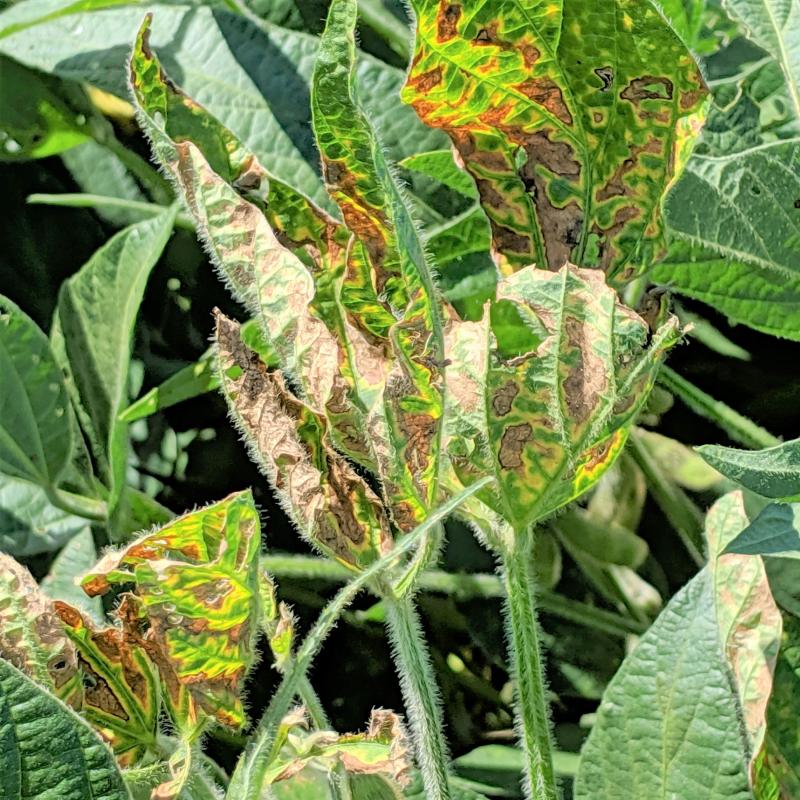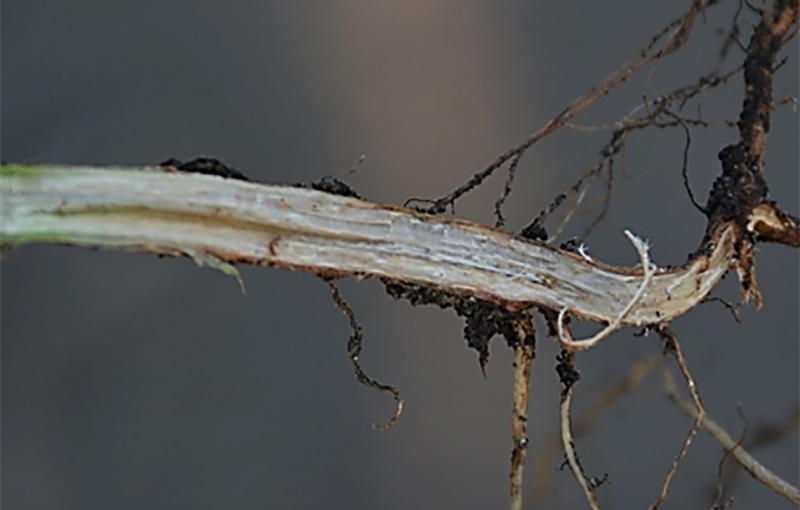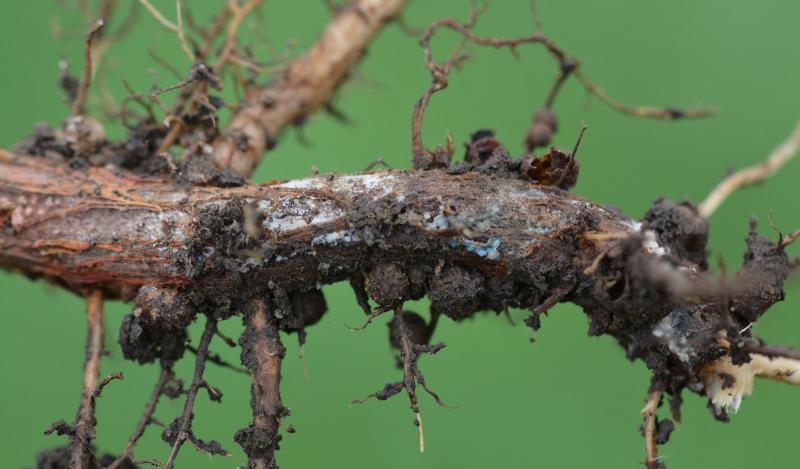Written with contributions by Emmanuel Byamukama, former SDSU Extension Plant Pathologist and Febina Mathew.
Sudden death syndrome (SDS) of soybean is starting to develop in soybean fields in South Dakota. Fields currently being found with SDS have symptomatic plants scattered within the field, but continued disease development may lead to larger clusters of infected plants.
SDS Symptoms and Transmission

Typical symptoms of SDS include yellow-chlorotic blotches between leaf veins, but with veins remaining green (Figure 1).
Sudden death syndrome is a fungal disease caused by Fusarium virguliforme.
The SDS pathogen infects soybean seedlings early in the growing season, but symptoms do not appear until the early reproductive growth stages under cool temperatures and frequent rainfall conditions.
The weather conditions we have experienced so far this season favor SDS development.
Differentiating SDS From Other Diseases

Roots and Upper Stem
Soybean plants with SDS symptoms have significant root rot.
However, unlike other diseases, such as white mold and stem canker, the upper stem surface does not develop symptoms (Figure 2).

Cortex and Pith
Soybean stems with SDS, when split lengthwise, reveal the browned cortex and white pith, which is a diagnostic characteristic of SDS (Figure 3).
Brown stem rot, which can have similar foliar symptoms, causes brown pith, but does not cause root rot.

TapRoot
When the soil is moist, blue spores may be noticed on the taproot of infected SDS plants (Figure 4).
SDS Management
There are no in-season treatments for SDS management; therefore, SDS management requires proactive approaches.
- Select cultivars rated as tolerant to SDS.
- Plant in well-drained warm (>°55 F) soils. SDS is favored by planting in cool, wet soils in spring.
- For fields with a history of SDS, consider using a fungicide seed treatment. Currently an active ingredient effective against SDS is Fluopyram.
- Manage soybean cyst nematodes (SCN). While not every soybean field with SCN has SDS, presence of SCN may exacerbate SDS.
- Harvest corn cleanly. Corn kernels left in the field maybe harbor SDS pathogen inoculum.

